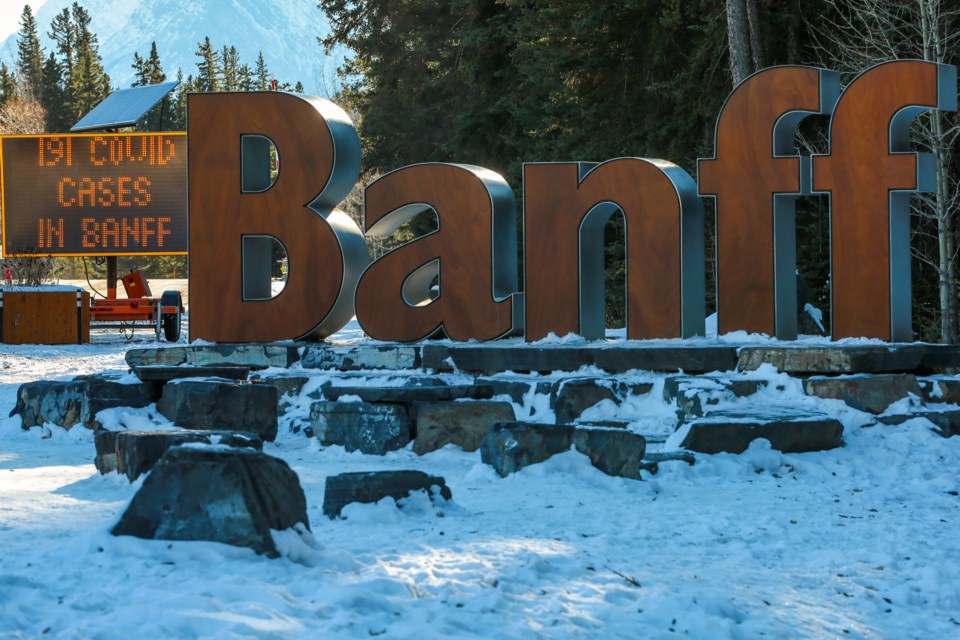BOW VALLEY – Banff and Canmore have seen the number of positive COVID-19 cases drastically drop.
Banff and Lake Louise had 16 active COVID-19 cases and Canmore had 14 as of Tuesday (Dec. 29).
In neighbouring Kananaskis Country, there were eight active cases, and another 38 in the Municipal District of Bighorn, which includes Harvie Heights, Exshaw and Lac Des Arcs.
Province-wide, there were 14,785 active cases, with 890 people in hospital, including 153 patients in intensive care. The death toll from the virus reached 1,028 in Alberta – with about 500 of those recorded in the last five weeks.
Provincial officials say they are concerned there could be a rise COVID-19 cases again if people ignored public health measures and had social gatherings over Christmas, and plan to do so again for New Year’s Eve.
“I am concerned, to be blunt, about what we might see coming out of Christmas,” said Premier Jason Kenney during a COVID-19 briefing on Tuesday afternoon (Dec. 29).
“Inevitably, there will have been at least some degree of socializing here in Alberta that could affect our numbers that we might see pop up in a couple of weeks.”
Under the current rules, visits from people not from the same household are not allowed and those caught could face a fine of $1,200.
Based on analysis from Dr. Deena Hinshaw, Alberta’s chief medical officer of health, and her team, Kenney said it is clear that the spike in cases in November and December is linked to Thanksgiving celebrations in October.
“If you look at where that really started to pick up, it was almost exactly 14 to 20 days after Thanksgiving when family gatherings happened, and then against our advice, people obviously also had Halloween parties,” he said.
“It was those intimate family gatherings, social gatherings, together with being indoors with cold weather, that led to this spike.”
That said, Kenney said he believes the public restrictions put in place in November and stronger measures on Dec. 8 – including tougher restrictions on businesses and a ban on all social gatherings – have helped start to drive case counts down.
“I want to say thank you to all of the Albertans who have made sacrifices to abide by these new public health guidelines over the past several weeks,” he said.
“It’s because of that that we are making progress.”
At the end of November, Banff had a high of 192 cases. For much of November and into December, the tourist town was considered one of the COVID-19 hot spots on a per-capita basis in in Alberta. Canmore had a high of 93 cases at the beginning of December.
Since the pandemic began in March, Banff has recorded 379 cases of the virus, with 363 recoveries, leaving 16 active cases. In Canmore, there have been 187 recorded cases, with 172 recoveries and one death.
To report a concern about potential gatherings in Banff, go to https://banff.ca/covid#Complaint




